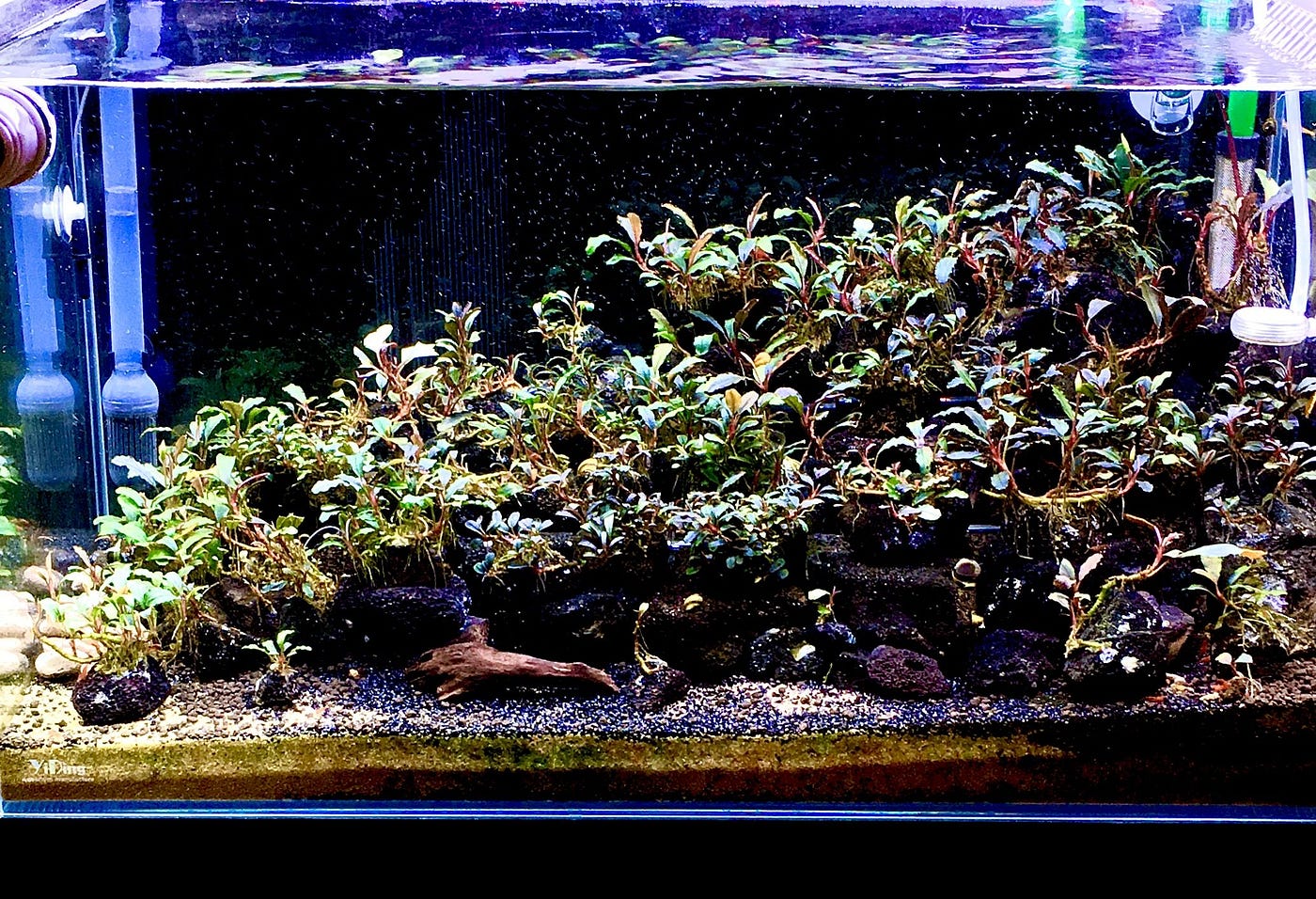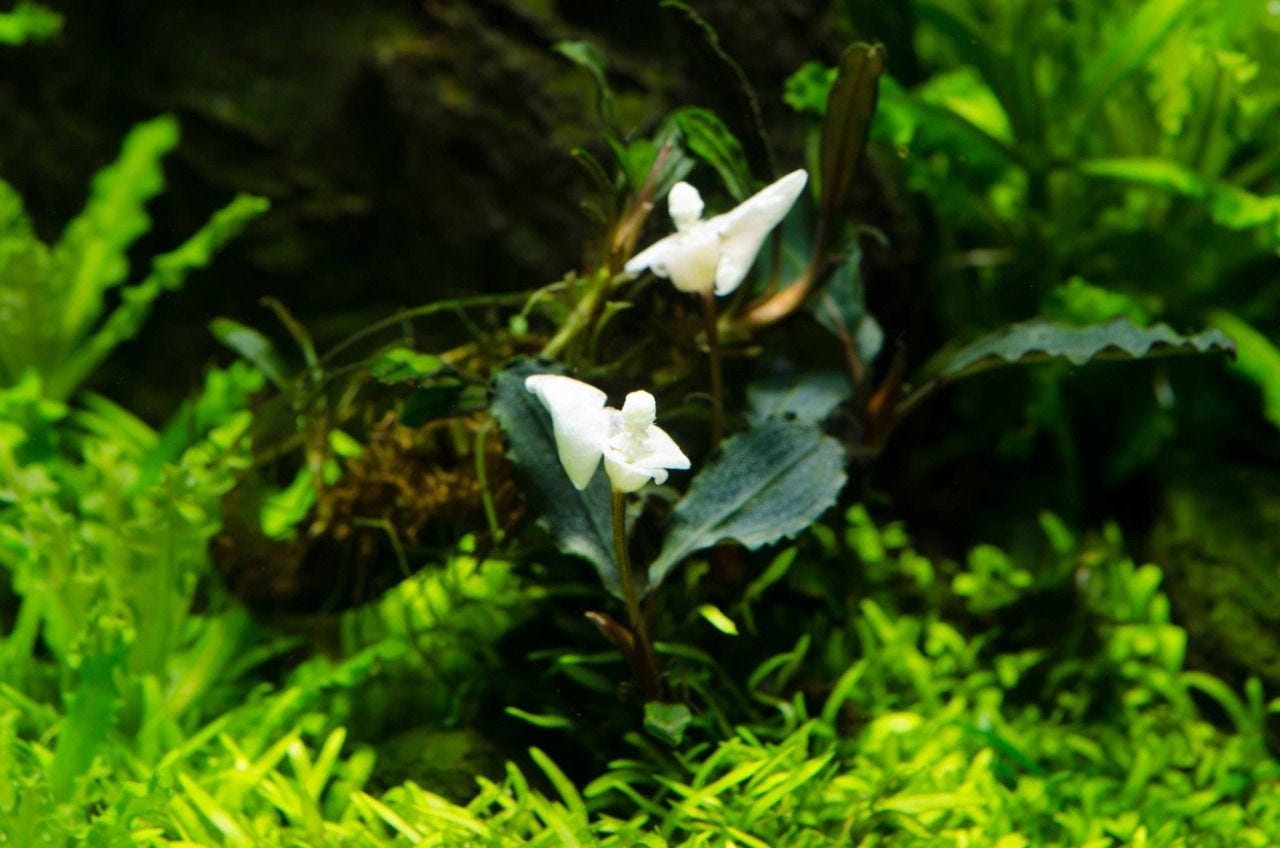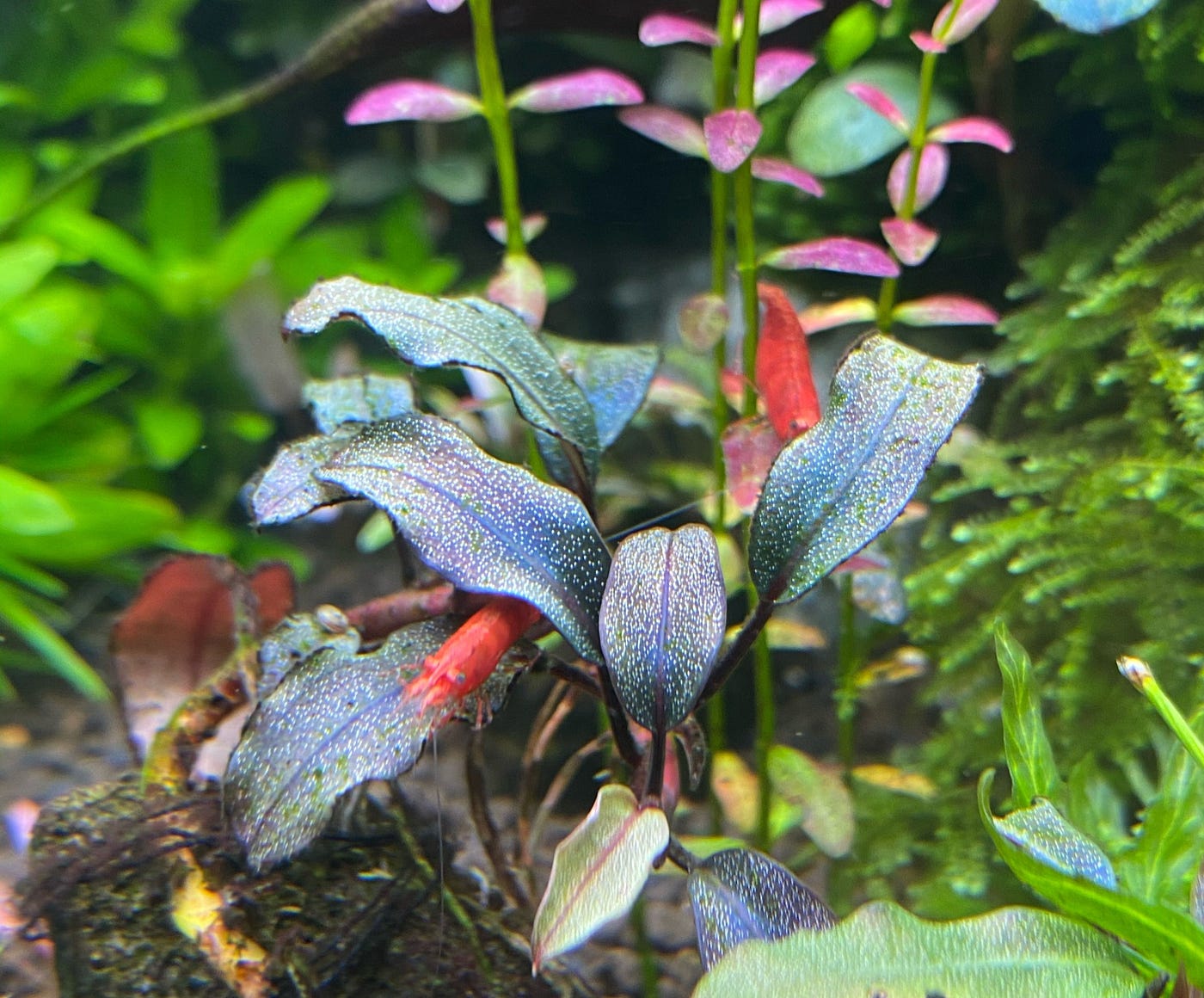Bucephalandra Aquarium Plant can Flower Underwater
What is Bucephalandra
Bucephalandra is one of the few aquatic plants that can bloom underwater in the family Araceae. They are small plants that were discovered long ago and even can be used as medicine. Recently years, it has been widely concerned as a high-end aquatic plant that is mainly spread in China, Japan, South Korea, Russia, Britain and Germany.

Bucephalandra profiles
Most of the Bucephalandra species are found in Borneo, they usually grow in dense over stones or rocks in streams or rivers in the tropical forest. There are more than 100 species discovered, which grow in three types: terrestrial, aquatic and underwater.
Scientific name: Bucephalandra
Family: Araceae
Characteristic: bloom underwater
Water temperature: 22~28℃/71.6~82.4℉
pH value: 6.0~7.5
dGH: 2~12 DH
Breeding difficulty grade: High
Growth process: Slowly
Lighting requirements: medium (80–160 lumens)
CO2: Recommended to add
Bucephalandra in aquarium
As an ornamental aquarium plant, although Bucephalandra grows slowly but it has a wide adaptation for aquarium. Most of them grow on rocks or in sandy substrates, many species can also grow well in gravel substrates in fish tank. You can fix it on sunken wood or rocks with fishing line if you want to build a paludarium.

Characteristics
Depending on your aquarium environment includes light, water flow, water parameters, CO2, etc., the leaves of different Bucephalandra specials have different colors, it will changes during the growth process, sometimes red, blue, purple, green, emitting pearl-like spots or even golden silver light.
In addition to multiple changes and manifestations, the extremely slow growth is one of its important characteristics. Whether it is a planted aquarium, a community fish tank, or a shrimp tank, Bucephalandra plays an indispensable role in it.
How to grow Bucephalandra for better color
Aquarium water quality and lighting can affect Bucephalandra’s leaf performance. As long as we notice aquarium light intensity, the fertility of the substrate, and the temperature in aquarium, we can basically make the Bucephalandra to be the glorious plant in your tank.

As the table shows above, Bucephalandra needs aquarium light between 80–160 lumens to color leaves, and requires rich elements such as iron in the water.
Lighting requirements
In order to make the leaves brilliance, strong lighting is indispensable. If possible, install a full-spectrum planted aquarium light in your tank which will stimulate the state of Bucephalandra.
Choice of fertilizer
Most Bucephalandra has the aerial root, if your planted aquarium has too fertile substrate, then the root will rot very easily. So, you can tie the roots to the stones or sunset wood, then bury them at a depth of 1/3 to 1/2, and set a medium water flow in the fish tank by water pump. It can avoid the attachment of algae, and makes the aerial root system more suitable for absorbing the nutrients in planted tank.

In this way, Bucephalandra will have an obvious metallic texture on its leaves, and the new leaves will show a bright red color.
Low temperature
Supplementing carbon dioxide in planted tank can indeed promote Bucephalandra’s growth, development and leaf color, but the degree of carbon dioxide is not necessarily as strong as other red water plants. We only supplement CO2 properly, it is not 24 hours but to supplement a certain level of carbon dioxide every day, which can ensure the brilliance state of the leaves.
The tank temperature also has a profound effect on the color of the leaves. Once the temperature is raised, the Bucephalandra’s color will naturally decrease by one chroma. When you want to adjust it to a better level, it is really a long process. This is the important point that Bucephalandra lovers need to pay special attention to.
But for sure, the most effective way to bloom Bucephalandra is by adding properly Co2 for them.


Comments
Post a Comment